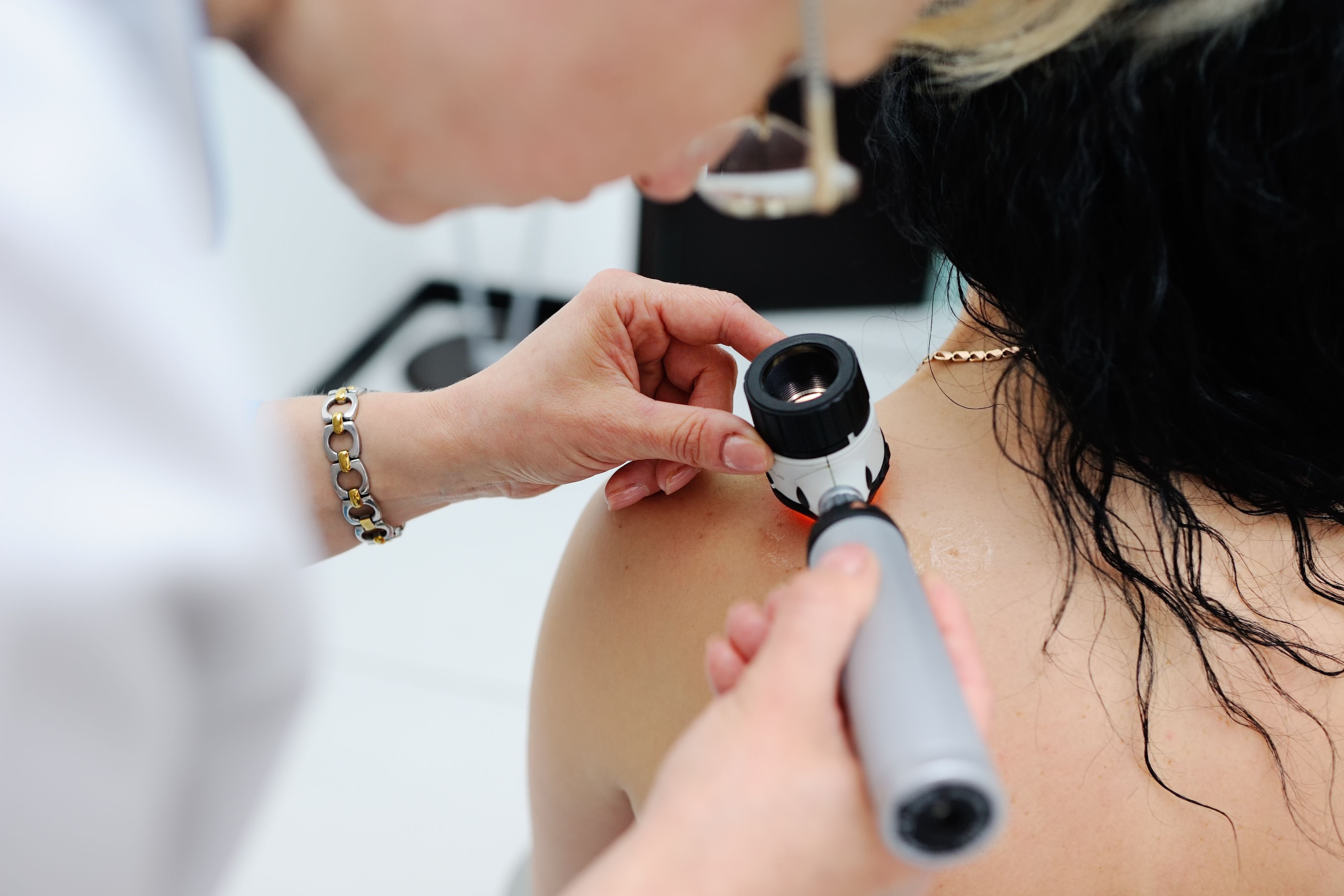Publication
Article
Pharmacy Times
Condition Watch, August 2024: Dermatology
Author(s):
Additional Training Is Needed to Battle Corticophobia for Patients With Atopic Dermatitis
Conversations about topical corticosteroids (TCS) are not new, and misinformation persists, causing corticophobia. This term was coined to indicate the phobia of TCS due to “vague negative feelings and/or erroneous beliefs about TCS held by patients and caregivers, which can be prompted by misinformation,” according to a report published in Clinical and Experimental Dermatology.1
Image credit: Evgeniy Kalinovskiy | stock.adobe.com

According to the authors, when used properly, TCS can decrease the risk of needing systemic immunosuppressive agents, which have more severe adverse effects. Nonadherence is a common obstacle to the control of conditions such as atopic dermatitis (AD) and are sometimes due to TCS-related phobias.1
In another study published in Journal of Clinical Medicine, investigators established risk factors that could be related to corticophobia for parents of children with AD, such as mild or moderate AD, older age of the patient, early disease onset, and previous health care professional consultations.2
Additionally, investigators of another study published in Anais Brasileiros de Dermatologia, the publication of the Brazilian Society of Dermatology, found there was an inverse correlation with health literacy and corticophobia, demonstrating that lower health literacy is a predictor of corticophobia.3
Because pharmacists are among the most accessible health care professionals for patients, their role in the management of AD and combating corticophobia is paramount. However, in a study published in Healthcare (Basel), investigators found that community pharmacists sometimes lack knowledge about the use of TCS, and recommendations for other treatment options were limited, despite some pharmacists receiving dermatology training after graduation. However, the investigators also found that pharmacists often continued their dermatology education post graduation and were eager to expand their knowledge, evident by joining training sessions, attending educational programs, or reading journal articles.4
REFERENCES
1. Finnegan P, Murphy M, O’Connor C. #corticophobia: a review on online misinformation related to topical steroids. Clin Exp Dermatol. 2023;48(2):112-115. doi:10.1093/ced/llac019
2. Herzum A, Occella C, Gariazzo L, Pastorino C, Viglizzo G. Corticophobia among parents of children with atopic dermatitis: assessing major and minor risk factors for high TOPICOP scores. J Clin Med. 2023;12(21):6813. doi:10.3390/jcm12216813
3. Gomes TF, Kieselova K, Guiote V, Henrique M, Santiago F. A low level of health literacy is a predictor of corticophobia in atopic dermatitis. An Bras Dermatol. 2022;97(6):704-709. doi:10.1016/j.abd.2021.11.007
4. Cayci AB, Rathbone AP, Lindsey L. Practices and perceptions of community pharmacists in the management of atopic dermatitis: a systematic review and thematic synthesis. Healthcare (Basel). 2023;11(15):2159. doi:10.3390/healthcare11152159
Lebrikizumab Shows Improvements in Atopic Dermatitis for Patients of Color
Lebrikizumab (Ebglyss; Eli Lilly and Company), specifically designed for individuals with skin of color, showed improvement in skin clearance and itch relief for moderate to severe atopic dermatitis, according to a news release from the company. Further, the efficacy data were consistent with other phase 3 studies, reinforcing the drug’s potential to be a first-line treatment after topical prescription therapy across a range of skin tones.1
The 16-week study included 50 individuals with darker skin tones (measured by the Fitzpatrick scale) and moderate to severe atopic dermatitis.
All patients initially received lebrikizumab at 500 mg subcutaneously for 2 weeks, followed by 250 mg subcutaneously from week 2 to week 16. Investigators found that 68% of individuals had a significant improvement of at least 75% in disease extent and severity, according to the release. Further, 46% of individuals experienced at least a 90% improvement in disease extent and severity.
Additionally, 39% of individuals achieved clear or almost clear skin, with a reduction of at least 2 points from baseline, and 56% of individuals experienced clinically meaningful itch relief, according to the release.
REFERENCE
More than two-thirds of people with atopic dermatitis and skin of color experienced skin improvement in a first-of-its-kind lebrikizumab study. News release. Eli Lilly and Company. March 10, 2024. Accessed March 18, 2024. https://www.pharmacytimes.com/view/study-lebrikizumab-demonstrates-improvements-in-atopic-dermatitis-for-patients-of-color
FDA Approves Roflumilast for Atopic Dermatitis in Patients 6 Years and Older
The FDA has approved a supplemental new drug application for roflumilast cream 0.15% (Zoryve; Arcutis Biotherapeutics, Inc) for the treatment of mild to moderate atopic dermatitis (AD) in adults and pediatric patients 6 years and older. Roflumilast was approved as a once-daily and steroid-free cream for rapid disease clearance and significant reduction in itch and for long-term disease control.1
The approval was supported by 3 phase 3 studies, 1 phase 2 dose-ranging study, and 2 phase 1 pharmacokinetic studies. In the INTEGUMENT-1 (NCT04773587) and INTEGUMENT-2 (NCT04773600) studies, the investigators found the once-daily treatment met multiple efficacy end points by 4 weeks with favorable safety and tolerability in the patient population. Patients with an Eczema Area and Severity Index (EASI) score of 5 or greater and a Validated Investigator Global Assessment-AD (vIGA-AD) score of either mild or moderate were included in the study.1,2
Investigators found in a pooled analysis of both studies that there was a greater percentage of those using roflumilast who achieved the primary end point of vIGA-AD success, defined as clear or almost clear and a 2 or greater grade improvement at baseline, at week 4 at 31.4% compared with 14.1% for those treated with the vehicle. The percentage of patients who achieved vIGA-AD of clear or almost clear was 41.1% and 21.4%, respectively, and the percentage of individuals achieving a 75% reduction in EASI was 42.7% compared with 20.6%, respectively.2
REFERENCE
1. FDA approves Arcutis’ ZORYVE (roflumilast) cream 0.15% for the Treatment of Atopic Dermatitis in Adults and Children Down to 6 Years of Age. News release. Arcutis Therapeutics Inc. July 9, 2024. Accessed July 10, 2024. https://www.globenewswire.com/en/news-release/2024/07/09/2910781/0/en/FDA-Approves-Arcutis-ZORYVE-roflumilast-Cream-0-15-for-the-Treatment-of-Atopic-Dermatitis-in-Adults-and-Children-Down-to-6-Years-of-Age.html#
2. Eichenfield L, Boguniewicz M, Simpson E, et al. Once-daily roflumilast cream 0.15% for atopic dermatitis: pooled results: from INTEGUMENT-1/2 phase 3 trials. Ann Allergy Asthma Immunol. 2023;131(suppl 5):S91. doi:10.1016/j.anai.2023.08.273

Newsletter
Stay informed on drug updates, treatment guidelines, and pharmacy practice trends—subscribe to Pharmacy Times for weekly clinical insights.





